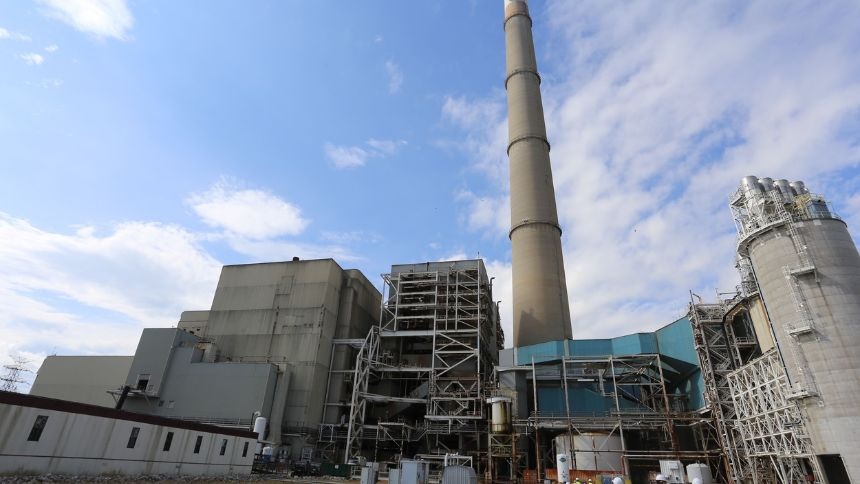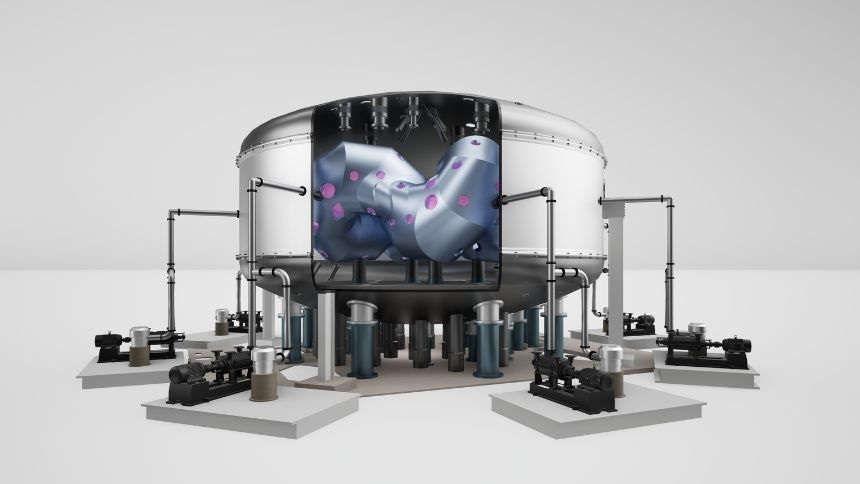
Nuclear renaissance takes a major step forward with an announcement from Type One Energy
The company announced the publication of the world’s first comprehensive, self-consistent, and robust physics basis for a practical fusion pilot power plant.
The nuclear renaissance in the region and for the nation took another major step forward with an announcement from Type One Energy, and it is about fusion energy, which has always been described as 20 years in the future. The latest announcement from the Knoxville-based company, which was the first recipient of funding through the then $50 million Tennessee Nuclear Energy Fund, could reduce that timeframe.
On Thursday Type One Energy announced the publication of the world’s first comprehensive, self-consistent, and robust physics basis, with conservative design margins, for a practical fusion pilot power plant. This physics basis is presented in a series of seven peer-reviewed scientific papers in a special issue of the prestigious Journal of Plasma Physics (JPP). They serve as the foundation for the company’s first Infinity Two stellarator fusion power plant project, which Type One Energy is developing for the Tennessee Valley Authority at the Bull Run Plant.
“Why are we the first private fusion company with an agreement to develop a fusion power plant project for an energy utility? Because we have a design anchored in reality,” said Christofer Mowry, the company’s Chief Executive Officer. “The physics basis for Infinity Two is grounded in the knowledge of what is required for application to, and performance in, the demanding environment of reliable electrical generation for the power grid. We have an organization that understands this isn’t about designing a science project.”

Ahead of the announcement, we had the opportunity to talk with John Canik, Chief Science and Engineering Officer for Type One Energy. He was a longtime Experimental Plasma Physics Scientist at Oak Ridge National Laboratory (ORNL) before joining Type One in February 2023.
To say the least, he was excited about the developments, the team that produced the results, and the exciting progress that Type One Energy has made. Canik described the announcement as a “big breakthrough,” adding that the region has truly embraced the technology. “The physics is ready,” now work shifts to a focus on the enabling technology.
“We committed to this ambitious fusion commercialization milestone two years ago, and today we delivered,” he said in a press release. “The team was able to efficiently develop deep plasma physics insights to inform the design of our Infinity Two stellarator, by taking advantage of our access to high-performance computing resources. This enabled the Type One Energy team to demonstrate a realistic, integrated stellarator design that moves far beyond conventional thinking and concepts derived from more limited modeling capabilities.”
The Infinity Two fusion pilot power plant physics design basis realistically considers, for the first time, the complex relationship between competing requirements for plasma performance, power plant start-up, construction logistics, reliability, and economics utilizing actual power plant operating experience. This Infinity Two baseline physics solution makes use of the inherently favorable operating characteristics of highly optimized stellarator fusion technology using modular superconducting magnets, as was so successfully proven on the W7-X science machine in Germany.
Led by Chris Hegna, widely recognized as a leading theorist in modern stellarators, Type One Energy performed high-fidelity computational plasma physics analyses to substantially reduce the risk of meeting Infinity Two power plant functional and performance requirements. This unique and transformational achievement is the result of a global development program led by the Type One Energy plasma physics and stellarator engineering organization, with significant contributions from a broad coalition of scientists from national laboratories and universities around the world.

As part of the effort, the company made use of a spectrum of high-performance computing facilities, including access to the highest-performance U.S. Department of Energy supercomputers such as the exascale Frontier machine at ORNL, to perform its stellarator physics simulations.
The consistent and robust physics solution for Infinity Two results in a deuterium-tritium (D-T) fueled, burning plasma stellarator with 800 MW of fusion power and delivers a nominal 350 MWe to the power grid. It is characterized by fusion plasma with resilient and stable behavior across a broad range of operating conditions, very low heat loss due to turbulent transport, as well as tolerable direct energy losses to the stellarator first wall. The Infinity Two stellarator has sufficient room for both adequately sized island divertors to exhaust helium ash and a blanket which provides appropriate shielding and tritium breeding. Type One Energy has high confidence that this essential physics solution provides a good baseline stellarator configuration for the Infinity Two fusion pilot power plant.
“The articles in this issue [of JPP] represent an important step towards a fusion reactor based on the stellarator concept. Thanks to decades of experiments and theoretical research, much of the latter published in JPP, it has become possible to lay out the physics basis for a stellarator power plant in considerable detail,” said Per Helander, head of Stellarator Theory Division at the Max Planck Institute for Plasma Physics. “JPP is very happy to publish this series of papers from Type One Energy, where this has been accomplished in a way that sets new standards for the fidelity and confidence level in this context.”
Important to successful fusion power plant commercialization, this stellarator configuration has enabled Type One Energy to architect a maintenance solution which supports good power plant Capacity Factors (CF) and associated Levelized Cost of Electricity (LCOE). It also supports favorable regulatory requirements for component manufacturing and power plant construction methods essential to achieving a reasonable Over-Night Cost (ONC) for Infinity Two.
Just last month, the Tennessee Valley Authority and Type One Energy, which was founded in 2019, signed a Cooperative Agreement to develop plans for Infinity Two
Like what you've read?
Forward to a friend!

